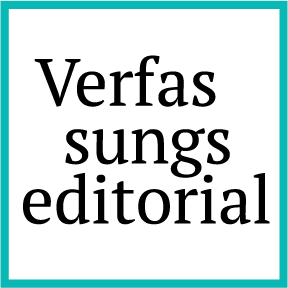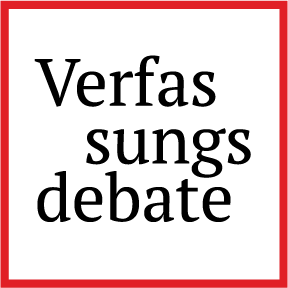Bullying Universities
How Trump is Destroying American Higher Education
David Pozen at Columbia University calls Columbia University’s new agreement with the federal government “regulation by deal”. In regulation by deal, the administration foregoes the process of developing general standards to be enforced by regularized processes, all under the watchful eyes of courts, and instead bargains directly with each institution to be regulated, striking a bespoke arrangement with each. This approach permits what Pozen calls a “government-enforced restructuring” of an institution that is far more detailed and intrusive than any general regulatory approach would permit. As Pozen puts it, “the agreement gives legal force to an extortion scheme.”
In many ways this regulation by deal approach is similar to what Trump is doing with tariffs, leveraging the US’s economic power to force particular countries to particular bargaining tables where the US demands what it wants from each one separately. There is no general policy, only particular extortion agreements. And we can expect that the regulation by deal will not end there. The format is similar across sectors: Trump withholds some benefit that his targets have gotten, and he makes them beg to get those benefits back. It is a strategy that uses the power of the government outside the development of general rules and therefore outside the law.
Following the money
Of course, Columbia should have learned by now that making a deal does not mean that the pressure stops. Appeasing a bully only empowers the bully – and he will be back for more. Regulation by deal, precisely because it bypasses general lawmaking procedures, leaves open the possibility that any deal can be supplemented with even more demands in the future. It can provide no legal guarantees of security.
But as we learn more about what Trump has done to Columbia, we should also keep in mind a bigger picture that Trump and his allies envision for the future of universities. The Trump administration follows other leaders like Viktor Orbán who brought Hungary to heel by weaponizing the national budget. (Background: I lived and worked in Hungary’s judicial system for most of the 1990s, and have been a critic of Orbán since he came to power – to the point where I am persona non grata there.) Orbán learned that money is the avenue to political control. And the Trump administration has learned that it can force universities to cave in by following (and controlling) the money.
In a modern state, virtually all corners of society – even institutions that think of themselves as otherwise independent – are fiscally dependent on powerful national governments. States can leverage grants, payment for services, tax breaks and regulatory enforcement to change the fiscal prospects of everything from the media to NGOs to law firms to universities. Once a leader realizes that he can use the state budget to force compliance with whatever agenda he is pushing, then institutions that have become dependent on state funds, tax breaks or regulatory forbearance are caught between caving in, making radical cutbacks and experiencing institutional death. That is what is happening now with universities.
Creating fiscal pain
The pressures on universities go beyond these bespoke deals. Trump’s team has figured out all of the different ways that universities are financially vulnerable and it is in the process of using all of them to create fiscal pain. Which particular points of leverage any university will be most vulnerable to will depend on how that university is funded.
First to suffer months ago were the universities highly dependent on biomedical research grants. Virtually all universities with big hospitals and medical centers, as well as all universities heavily dependent on their STEM (science, technology, engineering and math) programs, found themselves in the crosshairs first. Cutting huge swaths of federal research grants without warning and without time to transition to alternative funding (if it exists) has meant disaster for large swaths of university faculty and huge hits to university budgets. That’s how the attacks on institutions like Columbia and Harvard started.
But that was not the end of it. The Big Beautiful Bill included a significant increase in the tax that universities that fund themselves primarily through endowments must pay. The old tax system meant that that 1.4% of the money drawn from the endowment each year would be paid in federal taxes. The new endowment tax is now capped at 8%. That is much better than the 21% tax rate that passed in the House version of the bill, but it will hit endowment-dependent universities heavily anyway.
And that, too, is not the end. The Big Beautiful Bill also changed the ground rules for the federal student loan program. Tuition-dependent universities, especially those with higher tuitions, will feel these cuts because estimates are that many students who used to qualify for federal student loans will either be pushed into the private market or forego university educations entirely.
Attacking international student visas hits another pressure point. Some universities are heavily dependent on international students from wealthy foreign families to pay full tuition and subsidize domestic students as a side benefit. Losing this revenue if the US refuses to approve visas will blast open a hole in many universities’ budgets.
And finally, faux regulatory enforcement is another weapon. Anti-discrimination enforcement has been the leading edge of this strategy. Many universities – including Columbia and Harvard and at least 60 total – are under attack from the federal government, which has been insisting that these universities take radical steps to fight anti-Semitism. Not only has the federal government not followed the steps required by Title VI to enforce federal anti-discrimination law, but it has also made these accusations without the evidence to back up the charges. It could be that weaponizing anti-discrimination law is just the beginning. What happens when the administration finds other regulatory levers to press? Already the government is considering weaponizing the regulation of foreign funds going to universities – and are they going to use other regulatory levers like new enforcement guidelines or fraud prosecutions? The possibilities are endless.
Weaponizing the law
People on Trump’s team have targeted every single one of the ways that universities keep themselves afloat financially not just by making deals but by changing the law, by using the discretion that they have over other programs universities rely on (like student visas) and by using their regulatory enforcement and prosecutorial power (especially through enforcement of anti-discrimination law) to leverage what universities do.
Trump policy will hit every single university eventually – though in different ways depending on how any particular university gets its funding. The only way that universities can push back against this juggernaut of funding threats is to organize to present a united front. If the Trump strategy pits universities with large research grant portfolios against those who are most affected by the endowment tax against those who are dependent on student loans against those who fund themselves with foreign student tuition, then it will have succeeded in dividing and conquering. When universities like Columbia decide to go it alone to strike a bespoke deal, then this weakens collective solidarity which is the only way that universities as a group can become too big to bully.
Note: This piece was first published on The Contrarian.



